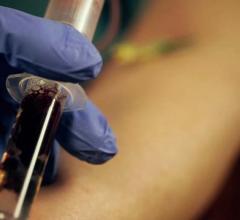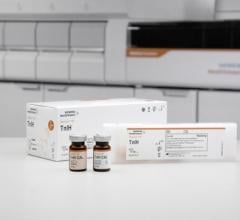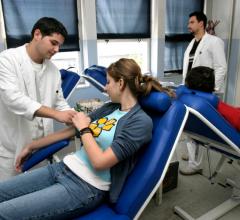
October 5, 2012 — LipoScience Inc., a highly innovative diagnostic company that is advancing patient care by developing high value proprietary blood tests using nuclear magnetic resonance (NMR) technology, announced the publication of results from a clinical study in the American Journal of Cardiology (AJC) suggesting that despite having cholesterol levels considered acceptable by today’s clinical standards, patients with Type 2 diabetes mellitus (T2DM) are at increased risk for cardiovascular disease (CVD)-related events.
“Many patients with T2DM have relatively normal levels of low-density lipoprotein cholesterol (LDL-C), yet cardiovascular disease is a primary cause of death in this population,” said Hector Malave, M.D., F.A.C.C., a practicing cardiologist in Atlanta, and lead author of the AJC manuscript. “This means that physicians should consider evaluating their diabetic patients for other factors that contribute to CVD risk, including LDL particle concentration (LDL-P), as our findings suggest there is a direct association between elevated LDL particle count and increased CVD risk in our study population.”
The clinical study examined variations in lipoprotein particle concentration in patients with T2DM with very low LDL cholesterol (LDL-C) and non-HDL cholesterol levels. The 1,970 patient cases studied were selected from LipoScience’s clinical laboratory database. Selection criteria included patients with LDL cholesterol levels <70 mg/dl, non-HDL cholesterol levels <100 mg/dl, triglycerides <150 mg/dl, and HDL cholesterol >40 mg/dl.
The study found that patients with T2DM exhibited significant variation in LDL particle levels, with many having LDL-P concentrations >1,000 nmol/L, suggesting the potential for residual CVD risk.
“These findings provide further evidence that there is a subset of T2DM patients with a disproportionally higher number of LDL particles, despite having LDL-C levels that would be considered normal or low,” said Bob Honigberg, M.D., vice president, medical affairs and chief medical officer of LipoScience, and an author on the AJC manuscript. “For these patients, we know that CVD risk is linked with LDL-P, and not LDL-C, and consequently, physicians should use particle concentration to better manage patients’ residual risk.”
For more information: www.liposcience.com and www.theparticletest.com


 October 09, 2019
October 09, 2019 








